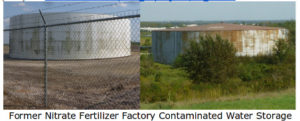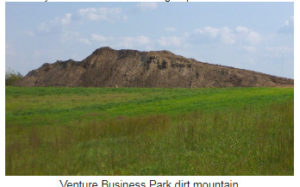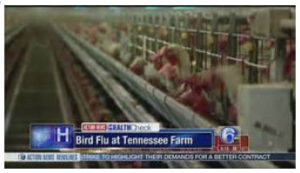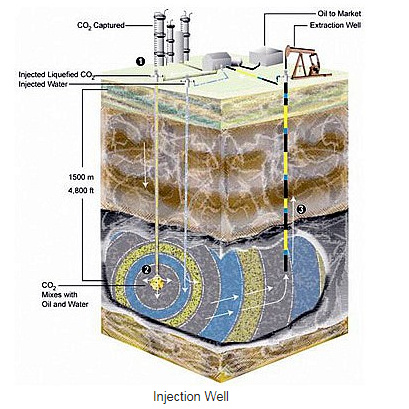The Kansas and Missouri River Watersheds are precious natural resources that provide essential Ecosystems services to the region. They are increasingly seeing the impact of unsustainable pumping, irrigation, deforestation, agrochemical pollution, CAFO’s, industrial waste, sewage overflows and effects of climate change.
Three major regional issues; oil field injection wells in eastern Kansas, nitrate contaminated water dumping into the Kansas River, and the proposed Tyson chicken factory in Tonganoxie KS. have galvanized concerned citizens and organizations to come together so their voices can be heard by local, state and Federal policy makers and regulators.
Sustainability Action Network has brought together Kansas Water Protectors, active in the various environmental and citizens groups in Wyandotte, Leavenworth and Douglass Counties.
To help you learn the background, here are articles that ran in the Sustainability Action Newsletter.
OIL-FIELD WASTEWATER INJECTION WELLS IN DOUGLAS COUNTY: BACK TO SQUARE ONE
We reported last week that Midstates Energy Operators had posted public notice of their applications for wastewater injection wells at two locations near Eudora KS, Douglas County. The company, which is a stand-in for the property owners, was too complacent about due process, and mis-stated the protest period as 15 days instead of the required 30 days for environmental concerns. So the Kansas Corporation Commission (KCC) has required Midstates to republish the notices all over again. That means that the public has another bite at the apple, with another 30 days to send protest to the KCC. The new deadline is Saturday, 25 November 2017. Protest can be sent to:
Kansas Corporation Commission
Attn: Rene Stucky
Conservation Division (Oil & Gas)
266 N. Main St., Ste. 220
Wichita, KS 67202-1513
Although injection wells are commonly used to dispose of fracking wastewater, this is not the case here. The southeast part of Douglas County has old oil fields that produce with difficulty, so they are resorting to “enhanced recovery” technology to force more petroleum to the surface. Fresh water mixed with CO2 is forced into the oil bearing rock strata, and the CO2 volatilizes the oil so it flows to the oil extraction well. The water that comes up with the oil is then disposed of under high pressure in deep injection wells. There are three concerns about injection wells associated with petroleum and gas drilling. The most common one is the high potential for triggering earthquakes in unstable geologic formations. The Kansas Geological Survey links earthquakes to fracking waste disposal, and has increased restrictions as a result of the 2016 earthquakes in southern Kansas. A second concern is the potential for the deep-injected waste water to migrate into freshwater aquifers. And the third concern is the potential for the brine wastewater to cause land subsidence and sink holes near the oil fields – Brine Disposal, Land Subsidence, Salt Dissolution: Oil and Gas Operations.

The following are the specific oil field leases which have permits applied for. The two adjacent properties are southwest of Eudora, and three miles south of the K-10/Dg. Co. 1057 Rd. interchange.
- One is the Thrasher Lease on the Mr. Pat Thrasher property, N.E. of the intersection of Dg. Co. 1057 Rd. and 458 Rd. The permit application is to “amend the injection well permit #E-31,965, Thrasher #10, Thrasher I-5, on Sec. 25, Twp. 13S, R 20E, Douglas County, Kansas”. Protest letters must reference that exact description.
- The other is the Hadl Lease on the Mr. Vernon Hadl property, S.E. of the intersection of Dg. Co. 1057 Rd. and 458 Rd. The permit application is for “enhanced recovery of injection wells under permit #E-32,566, Hadl I-1 and Hadl I-2, on Sec. 36, Twp. 13S, R 20E, Douglas County, Kansas” Protest letters must reference that exact description.
You should receive acknowledgement from the KCC that they received your letter. But if you want to be legally certain, mail it Certified/Return Receipt. Once the protest period closes, the KCC will probably schedule a hearing on the permits – most likely in Topeka. Anyone who submitted a letter of protest is entitled to testify at the hearing.
LAWRENCE TO DUMP 30 MILLION GALLONS OF NITRATE CONTAMINATED WATER INTO THE KAW

Last Friday, 10 November 2017, a local newspaper article proclaimed that the Kansas Department of Health and Environment (KDHE) would allow Lawrence to dump up to 30 million gallons of nitrate contaminated water into the Kansas River. The water is a result of an admirable project of Lawrence, that of cleaning up the brownfield site of the Former Farmland Fertilizer Factory on the east side of town, and building the Venture Business Park (VBP) there. Decades of production of ammonia nitrate fertilizer had contaminated the soil and groundwater. And when Lawrence took ownership of the 467 acre site for free as part of a legal settlement, they also assumed liability for cleaning up what they thought would cost $13 million. But instead of giving the City Commission a really sweet deal, the former City Manager led them into a quagmire, and then hightailed it to Colorado.
Rainwater and groundwater flowing through the site washes out some nitrates, the City pumps water out, temporarily stores it in huge tanks, and sends it by pipe north of the river to a number of farms that have been using it to fertilize their crops. Straightforward and easy, right? Well, several snags have interfered. For one, there is a $8.6 million trust fund for the project, and interest from that was intended to meet the $13 million overall cost. But half of that trust fund was mistakenly left in a non-interest bearing account, so now they’re short of funds. Also, they projected that new businesses coming to town to buy sites at Venture Business Park would help defray costs, but with no takers so far, the City is giving away land as a come-on for businesses. Finally, the City failed to secure long term contracts with local farms to keep taking the nitrate water, and now several farms have switched to crops that don’t need the water. So nitrate water is still being pumped, storage tanks are full, and the distribution pipe is flowing at reduced rate. The only solution that Lawrence officials could conceive of would be to carry about 10 million gallons of water in about 1480 truckloads to nearby farms, at a cost of about $400,000. And this would be only a temporary fix – VBP nitrate water update_City Mgr Report_3Oct17.

So to the rescue comes KDHE with their “solution to pollution is dilution” plan. “We’ve conditioned this discharge so that the river really assimilates the nitrogen load quickly and disperses it”, said Tom Stiles, assistant director of the KDHE Bureau of Water. They claim that the mere 500,000 gallons per day is just a drop in the ocean, but it’s commonly known that the myriad nitrate discharges from all over the middle-continent river basin cumulative causes the Gulf of Mexico Dead Zone. And nitrates in drinking water also cause human health problems, the most serious being blue baby syndrome which can be fatal. City water treatment does not remove nitrates, and most home water purification systems do not either – State authorizes Lawrence to release up to 30 million gallons of nitrogen-contaminated water into Kansas River.
The City of Lawrence is saying the river discharge is not significant, and that they have heard nothing from the citizens regarding this situation. It’s no wonder they haven’t heard anything about this from the citizens, because all communications have been restricted to the City Manager’s report at the end of City Commission meetings. It wasn’t until last Friday’s newspaper article that anyone, other than the most ardent followers of City affairs, had heard anything about the plan. For that matter, none of the City Manager’s reports even indicated any plan at all except for the trucking option – VBP nitrate water update_City Mgr Report_5Sept17. The only hint that KDHE might bend the rules was statements like “The city has also requested additional guidance from KDHE”, and “The City has proactively engaged the Kansas Department of Health & Environment in assisting with the matter”. Inside sources have indicated that KDHE offered the discharge option to Lawrence. Both parties are now pointing fingers at each other with regard to who made the actual decision to discharge to the Kaw. Neither wants to acknowledge the responsibility.
It’s an open question as to how long ago the Kansas River discharge option may have actively, though quietly, been considered. According to Tom Stiles of KDHE, the nitrogen water will be released to the river via existing infrastructure of ditches and culverts. Is it just a puzzling coincidence that for the past six months, Douglas County stormwater crews have been dramatically enlarging two culverts under roads and the drainageway itself, directly north of Venture Business Park to where it empties into the Kansas River? Thousands of cubic yards of dirt have been dredged from the creek and trucked up to VBP where it is stockpiled in a virtual mountain. Or did the newly enlarged drainage ditch simply give officials the serendipitous ability to use the river discharge option?

Citizens now in the know may be raising these questions and others about transparency, percent nitrate concentration in the discharge, if and how much the existing river discharge permit may need to be expanded, what evidence they will review from downstream impacts, and what bearing the Clean Water Act may have on this plan. In any case, if someone wants to question City officials, they can be contacted at – Lawrence City Commissioners , and City Manager, Tom Markus at <tmarkus@lawrenceks.org>. Also, the City Commission meets Tuesdays at 5:45pm at City Hall, with a public comment period at the beginning of each meeting.
EXTENT OF TYSON CHICKEN FACTORY, AND DEPTH OF OPPOSITION

As Tyson Foods announced on 5 September, they plan to build a $320 million poultry processing plant south of Tonganoxie KS, with a start up date in mid 2018. The slaughterhouse would be on 300 acres, and process 1.25 million birds per week. In addition, Tyson would set up what they call “growout complexes” under contract with independent operators, commonly referred to as poultry houses or chicken factories. There would be about 40 of these farms within a 50 mile radius of Tonganoxie, where up to 30,000 chicks would be hatched and raised in each of the confined animal feeding operations (CAFOs), and then trucked to the Tonganoxie slaughterhouse. The impact on Tonganoxie and surrounding communities would include: air pollution from dust, ammonia, and other chemicals; water pollution of groundwater and streams; fish kills; liquefied animal waste containing E. coli and excess antibiotics spread on farm fields; damaged roads due to heavy CAFO semi-truck traffic; dehumanizing and injurious working conditions; and increased healthcare costs from polluted water, and arsenic and salmonella in processed chicken – Environmental Impact of Factory Farms.

Tyson is the largest U.S. producer of broiler and layer chickens, and they have a very long criminal rap list. They have more than 100 violations of EPA and USDA regulations, including toxic air releases, as well as 20 felony violations of the Clean Water Act. Equally worrisome are the satellite growout complexes throughout the region which are subject to a checkerboard of code provisions and regulations, or exempt depending on the locale. Tyson assumes no liability for these independent contractors, making enforcement fall upon the backs of local officials and taxpayers. Just this past March 2017, a Tyson-contracted chicken factory in Lincoln County TN suffered an outbreak of lethal H7 avian influenza (bird flu), also called highly pathogenic avian influenza (HPAI). It’s also highly contagious, requiring the immediate killing of all 73,500 birds in the facility, and placing under quarantine, along with approximately 30 other poultry farms within a 6.2-mile radius of the site. This is not an uncommon occurrence. In 2014 and 2015, during a widespread outbreak of HPAI, the United States killed nearly 50 million birds, mostly egg-laying hens. Learn more at – Bird flu outbreak at Tennessee poultry farm confirmed after chicken deaths.

Folks in Tonganoxie, Leavenworth County, and surrounding counties are no slouches though. Within days, a group called Citizens Against Project Sunset (CAPS) had formed, and on Saturday, 8 September, CAPS held an opposition rally that attracted more than 1000 people. They had speakers, petitions to sign, flyers and stickers and yard signs, and computers set up to build a data base. Other groups are working with them including the Socially Responsible Agricultural Project out of Nebraska, and CleanAirNowfrom Kansas City. This past Friday, on 15 September, another rally attracted some 2500 people where they had three Kansas Representatives in attendance, had an on-the-spot post card writing campaign, and had created a website and a Facebook page. They are in the process of becoming a tax deductible organization so that contributors will get a tax deduction, and they can raise enough money to hire an attorney. As one of the organizers said, “It’s amazing how much you can get done over your lunch hour!” To learn more, and/or join the effort, go to No Tyson in Tongie, or Citizens Against Project Sunset (CAPS) on Facebook.
For the Protecting Water panel discussion, these representatives from our sister organizations will be the panelists:
Dawn Buehler – Friends of the Kaw: Kansas Riverkeeper
Elaine Giessel – Kansas Sierra Club
Thad Holcombe – Water Advocacy Team
Rachel Jefferson – Historic Northeast Midtown Association
Karin Pagel-Meiners – Wakarusa Group – Kansas Sierra Club
Jessica Skyfield – Kansas Water
Eric Kirkendall, moderator – Sustainability Action Network
The evening will begin with a pot luck dinner at 6:00 pm sharp (arrive a little early with your dish). At 7:00 pm the kitchen will close, and we will welcome everyone and give an overview of water issues concerning our local communities. From 7:00-8:00 pm, after introductions, each of the panelists will describe the state of water as they see it, and how their organization is working to protect our waters for the common good. From 8:00-9:00pm, we want to explore how all of us can best work together as a team to define and spark action that will lead to substantive change. Each of the panelists and their organizations have distinctive approaches to these issues, and any potential actions will be more effective if we combine our efforts. We hope you will join us.


Recent Comments